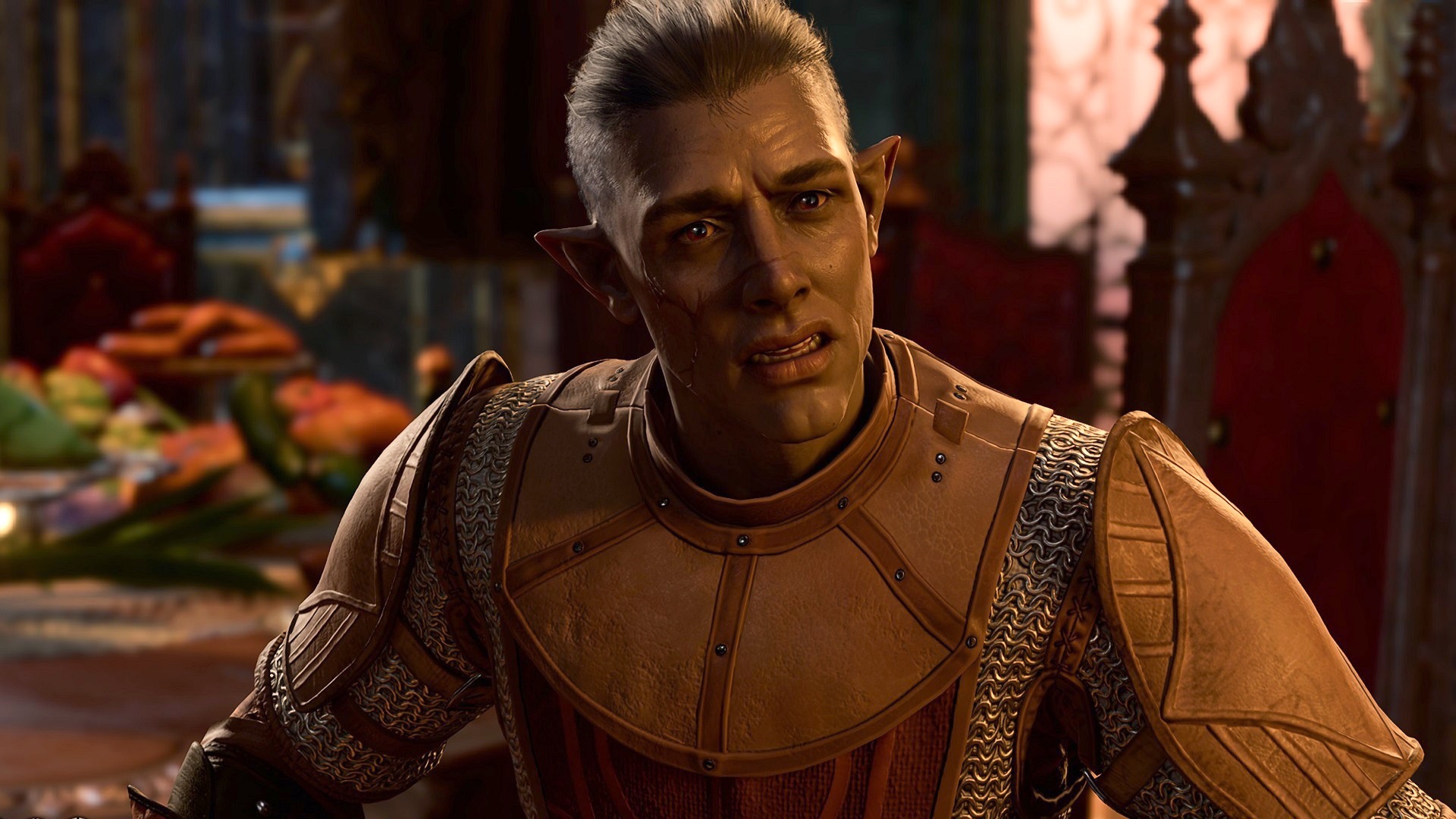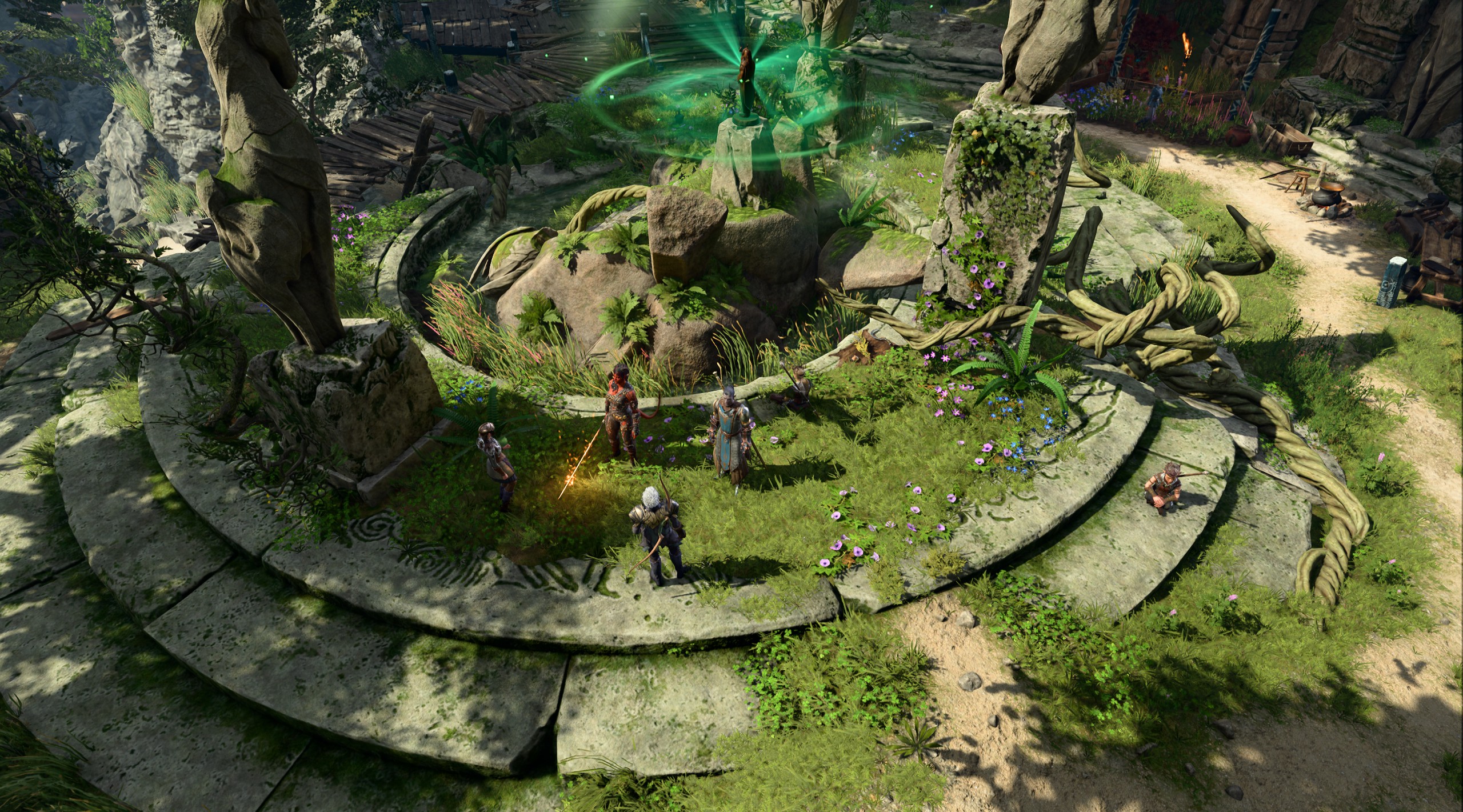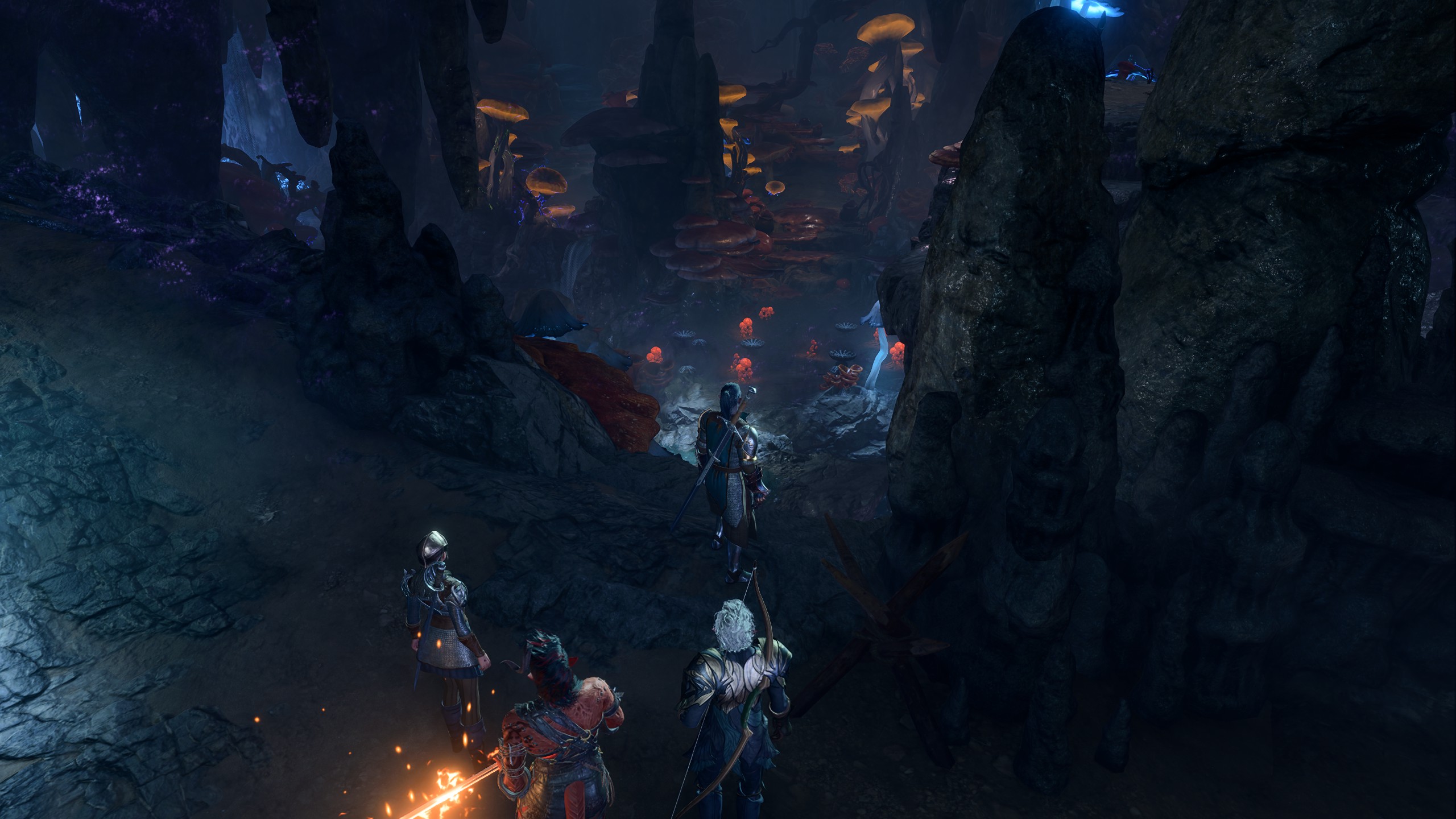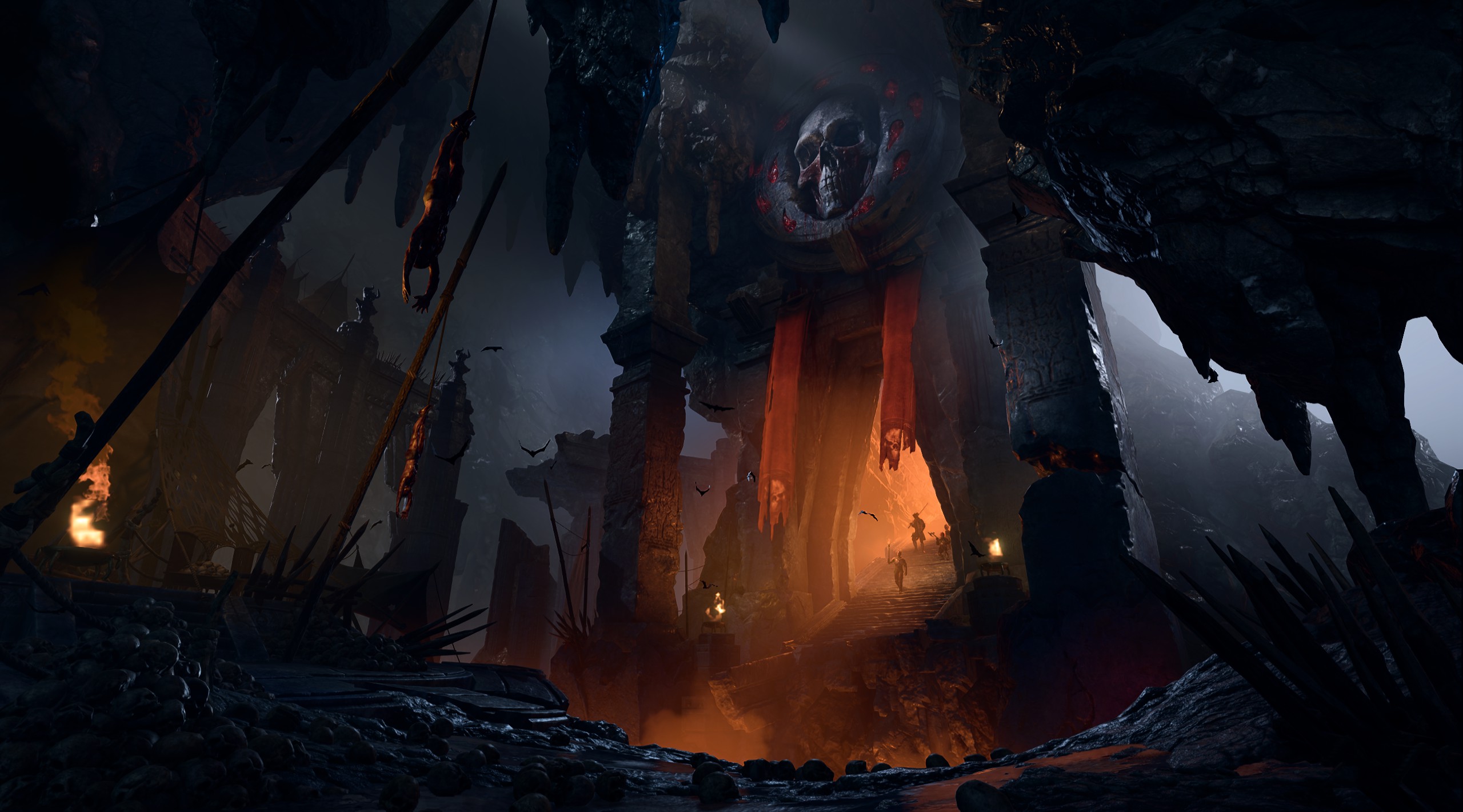
One thing I just haven't been able to get out of my head with Baldur's Gate 3 is how absolutely messed up it is that Larian managed to create something this old school, complicated, and deep while also having it look so goddamn gorgeous. Seriously, Baldur's Gate 3 is a stunner. It feels like the next-gen Dragon Age I always wanted, while being as complex and surprising as anything that came out of the late '90s—how is that possible?
I like my RPGs big, weird, and hardcore (to the mega). Usually, that requires some compromise. Even with the herculean effort to fully voice Disco Elysium's one million lines of dialogue, or the lavish pre-rendered environments of Pillars of Eternity 2: Deadfire, they rely on your imagination and walls of text to convey large swathes of their stories. Larian's own Divinity: Original Sin 2 deployed huge text dumps to deliver key moments like companion romance scenes.
Baldur's Gate 3's production values are a sizable cut above anything I've seen in a CRPG before.
When you don't have to render everything, that frees you up to create anything: I still remember the first time I tried ripping out my own eye in Planescape: Torment to replace it with one from my past life, unlocking memories of forgotten battles in far-flung planes. It was all delivered through text, and it ruled. Similarly, it's much more feasible to create the intricate, settlement-by-settlement outcomes and multipart endings of a Fallout or Arcanum: of Steamworks and Magick Obscura when they're crafted out of sprites, tiles, and text as opposed to expensive polygons.
More cinematic RPGs like Mass Effect or The Witcher understandably have to ratchet down on this ambition and flexibility: you get a more beautiful, approachable experience at the expense of all that wiggle room lower production values can afford.
The only big CRPGs that come to mind for me as reaching that fully classic level of intricacy while having flashy, full-3D production values are Vampire: The Masquerade - Bloodlines and Fallout: New Vegas, both of which are now stone-cold genre classics. Even still, while fully-voice acted and graphically impressive for their times, they both carry a certain RPG stiffness and that creakiness has only magnified as time has passed.
I'm "only" 16 hours or so into my playthrough, so final takeaways on Baldur's Gate 3's legacy have to be tentative at this point, but it already feels like the visual and art expectations for this style of RPG have been permanently elevated.

Just think about how hard it is to render a character picking up an object and handing it to another character. I fondly remember that "BioWare pass" in KotOR or Mass Effect. You know, the characters kind of gesture in a way that suggests they're passing something along, but their hands are empty the whole time. In The Witcher 3, I was blown away when Geralt gave the Ladies's knife to the alderman of Downwarren, and CD Projekt actually showed the knife changing hands with a cheeky cutaway to a bespoke animation.
Now cut to Baldur's Gate 3 and it is full of characterful animations in all of its scenes, with people believably emoting, touching, and shifting positions even in secondary conversations. A swirling wineglass here, a tasteful smirk there—it's still far from the mainline cutscenes of a Death Stranding, but Baldur's Gate 3's production values are a sizable cut above anything I've seen in a CRPG before.

I've found I can actually read Astarion's facial expressions before I ever have to check how that lovable prick feels about me on his character sheet, while in one early scene the druid Kagha's pet snake coils around a Tiefling child with believably sinister intent. Baldur's Gate 3's assets and engine contribute plenty, but the quality of its animations and scene direction elevates the game beyond what I've experienced in this style of RPG.
The grove conflict and its myriad outcomes feel like a confident expression of an old school RPG that's just firing on all cylinders.
One of act one's main quests—sorting out the conflict between a druid's grove and a rapacious goblin tribe—has a classic Fallout vibe to its twisty complexities and myriad outcomes. You can betray the grove to the goblins like a real Chaotic Evil bastard, tactically assassinate the goblin leadership to save the grove, slaughter any number of either (or both) settlements like a psycho, or I've even heard that you can betray the grove to the goblins, then warn the grove of the impending attack to lure the goblins into an ambush. And I don't even know how this all pans out in the long term with an interrelated conspiracy involving Shadow Druids.

Each path carries a mutually exclusive, romanceable party member for the remainder of the game: Drow paladin Minthara for bad seeds, or now-infamous hunky man-bear druid Halsin for Dudley Do-Rights. Both are fully voiced and fleshed out, with their own associated personal quests like any good BioWare-style companion. All that missable content is on the same tier as The Witcher 2's legendarily mutually exclusive second acts, but instead of some big, self-conscious to-do or back of the box selling point—you know, "please select your preferred second act here"—the grove conflict and its myriad outcomes feel like a confident expression of an old school RPG that's just firing on all cylinders.
It's still early days for us on Baldur's Gate 3—we've only had access to the launch build for less than a week, so there is plenty of game ahead of us—but we're absolutely in love with it so far. PC Gamer online editor Fraser Brown had nothing but praise in his review-in-progress, and so far Baldur's Gate 3 feels like a genuine evolution of the genre. It's a union of that hardcore, open-ended design sensibility I crave and the lavish production values we've come to demand from our games.







